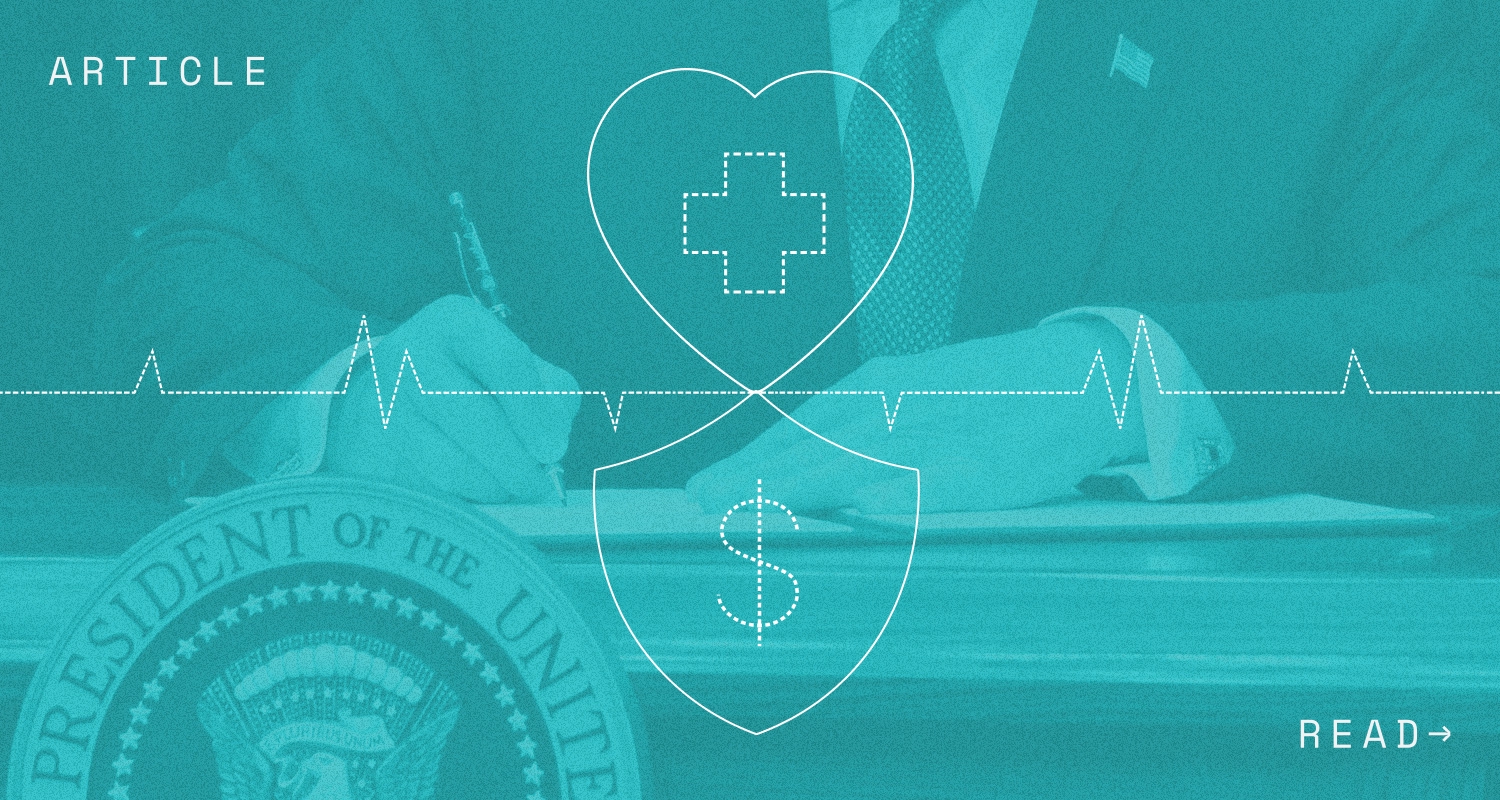As a part of the COVID-19 relief package, Congress recently passed the “No Surprises Act” (Act), which provides consumer protections from the practice of “surprise billing.” Surprise billing, also called “balance billing,” generally refers to situations where individuals receive unanticipated bills for out-of-network care that is not covered by their insurance. This often occurs in circumstances when an individual receives out-of-network emergency care and in cases where individuals (sometimes, unknowingly) receive care from an out-of-network provider at an in-network facility. Insurers only cover a limited amount for out-of-network services and the balance of the bill is the responsibility of the patient (hence the term “balance billing”). This sometimes results in patients receiving large bills that they are unable to pay.
The Act tackles surprise billing through a variety of provisions that apply to group health plans, insurers, and health care providers and facilities, including the following:
- Required Coverage for Out-of-Network Care: Group health plans and insurers cannot impose higher cost-sharing for out-of-network emergency care and certain non-emergency care. In effect, individuals will not be required to pay more for out-of-network care than they would have had to pay for the same in-network care. Further, when benefits are provided by a plan, out-of-network providers and facilities cannot hold individuals liable for amounts beyond their required cost sharing.
- Good Faith Cost Estimates: For scheduled care, health care providers and plans are required to provide plan participants with a good faith estimate of the cost and their share of the cost before care is delivered.
- Continuity of Care: If an in-network provider or facility is removed from a plan’s network, the plan or insurer is required to notify any plan participants receiving ongoing care from that provider or facility and permit plan participants to continue receiving care at in-network rates for a certain transitional period.
- Consumer Resources: Group health plans or insurers will be required to provide plan participants with price comparison tools and an identification card with information on cost-sharing and consumer resources.
Most of these provisions are effective for plan years beginning on or after January 1, 2022.
Required Coverage for Out-of-Network Care and Prohibition on Surprise Billing
The Act aims to eliminate surprise billing by (1) requiring group health plans and insurers to cover certain out-of-network care, (2) limiting cost-sharing for out-of-network care and requiring plans and insurers to promptly pay out-of-network providers and facilities, and (3) prohibiting out-of-network providers and facilities from sending individuals surprise bills. These requirements are outlined below:
Coverage for Emergency Services
Group health plans and insurers that provide benefits for emergency services must cover these services without requiring prior authorization and regardless of whether the services are furnished by an in-network or out-of-network provider or facility. If the care is provided by out-of-network providers or facilities, any limitation on coverage cannot be more restrictive than limitations placed on the same in-network care.
Cost-Sharing and Payment for Out-of-Network Care
For out-of-network emergency care, out-of-network air ambulance services, and non-emergency care from an out-of-network provider at an in-network facility, the Act limits cost-sharing requirements and prescribes new billing practices that aim to leave patients out of any payment dispute. In these situations, group health plans and insurers are subject to the following rules:
- Any cost sharing requirement (e.g., copayments, coinsurance, and deductibles) for out-of-network care cannot be greater than the cost-sharing required for the same in-network care;
- Any cost-sharing payment made by plan participants must be counted toward any in-network deductible or out-of-pocket maximum in the same manner as in-network cost-sharing payments; and
- Plans or insurers must provide an initial payment (or notice of denial) within 30 days of receiving a bill by an out-of-network provider or facility. The Act outlines methodologies for determining the amount that plans/insurers must pay for out-of-network care (i.e., the “out-of-network” rate) and provides an independent dispute resolution process for payment disputes between plans/insurers and out-of-network providers and facilities.
Prohibition on Surprise Billing
Where benefits are provided under a group health plan, out-of-network providers and facilities are prohibited from billing or holding covered individuals liable for payments beyond any required cost-sharing under their plan. This applies to care rendered during plan years that begin on or after January 1, 2022 for out-of-network emergency care and non-emergency care (unless an individual knowingly consents, as outlined below).
- Consent Exception for Out-of-Network “Non-Emergency” Care: Certain out-of-network providers and facilities can hold individuals liable for payments beyond their cost-sharing requirements in non-emergency situations if the individual knowingly consents to using the out-of-network care (i.e., the individual will not be “surprised” by any balance bill). For the consent to be valid, providers would have to notify individuals of the following at least 72 hours before services are rendered:
- The provider or facility is out-of-network;
- The “good faith estimated amount” that the provider or facility may charge the individual for the care;
- A list of in-network providers at the facility that are able to furnish the services involved;
- Information about whether prior authorization or other care management limitations are required; and
- The payment may not accrue toward the individual’s plan’s cost-sharing requirements, the way that an in-network deductible would.
Beginning January 1, 2022, health care providers and facilities are required to post a one-page notice with information on the prohibition on balance billing, any applicable State law regarding amounts the provider or facility may charge individuals, and contacts for State and Federal authorities to report any violations.
Fair and Honest Advance Cost Estimates
The Act requires providers and plans to provide “good faith estimates” of costs for scheduled health care services. Beginning January 1, 2022, if an individual schedules a health care service at least 3 business days before receiving care, the health care provider or facility performing the service must:
- Ask whether the individual in enrolled in a group health plan or Federal health care program (and if so, whether the individual plans to submit a claim for the service to their plan); and
- Provide notification of the good faith estimate of expected charges for the item or service to the individual’s plan or insurer (or to the individual if they are not enrolled in coverage).
For plan years beginning on or after January 1, 2022, plans that receive the provider’s notice of a scheduled service must provide an “advanced explanation of benefits” to the plan participant (through mail or electronically, as requested by the participant), which must contain the following information in clear and understandable language:
- Whether the provider or facility is in-network and the contracted rate under the plan for such item or service (if the requesting provider or facility is in-network) or a description of how the participant can obtain information on in-network providers or facilities (if the requesting provider or facility is out-of-network);
- The good faith estimate by the provider or facility (as outlined in the provider’s notice to the plan) and the good faith estimate of how much the plan will pay for the care, any cost-sharing by the plan participant, and the amount the plan participant already incurred toward their financial responsibilities under the plan (including deductibles and out-of-pocket maximums);
- If applicable, a disclaimer that coverage for such item or service is subject to prior authorization;
- A disclaimer that the information is only an estimate based on the items and services expected to the furnished and is subject to change; and
- Any other information or disclaimer that is appropriate.
The plan must provide the notice to plan participants within a specified period and, in certain circumstances, no later than 1 business day after receiving the notice from the provider or facility.
Ensuring Continuity of Care for Terminating Providers and Facilities
For plans years beginning on or after January 1, 2022, when a provider or facility is removed from the plan’s network, the plan or issuer must do the following:
- Notify each plan participant who is a “continuing care patient” of the removal of the provider or facility from the plan’s network “on a timely basis” and their right to elect continued transitional care from the terminating provider or facility; and
- If elected by the plan participant, cover services by the terminating provider or facility under the same terms and conditions as would have applied if no termination occurred for 90 days from after the notice was provided or the date in which the individual is no longer a continuing care patient, whichever is earlier.
An individual is considered a “continuing care patient” when receiving care from the provider or facility while:
- Undergoing a course of treatment for a serious and complex condition;
- Undergoing a course of institutional or inpatient care;
- Scheduled to undergo non-elective surgery (including postoperative care);
- Pregnant and undergoing a course of treatment for the pregnancy; or
- Terminally ill and receiving treatment for such illness.
Consumer Resources
Transparency for Plan Deductibles and Out-of-Pocket Limits
For plan years beginning on or after January 1, 2022, group health plans or insurers must provide an identification card (whether in paper or electronic format) to plan participants with the following information in clear writing:
- Any deductible and out-of-pocket maximum limitation applicable to their plan; and
- A telephone number and website address where individuals can seek consumer assistance information (e.g., information related to in-network hospitals and urgent care facilities).
Price Comparison Tool
For plan years beginning on or after January 1, 2022, group health plans or insurers must offer guidance on price comparison by telephone and through a website. The price comparison tool must allow plan participants to compare the amount of cost-sharing for specific items and services by geographic region and in-network providers.
Employer Action
- Fully Insured Employers: Employers should ensure their carriers are implementing the required provisions under the Act for plan years beginning on or after January 1, 2022.
- Self-Insured Employers: Employers should work with their third-party administrator (TPA) or vendor to implement the Act’s group health plan requirements for plan years beginning on or after January 1, 2022.
Additional Resources
- COVID-19 Stimulus Bill: Consolidated Appropriations Act, 2021 (December 20, 2020)
- Sequoia Blog: COVID-19 Stimulus Bill Signed into Law (December 28, 2020)
Disclaimer: This content is intended for informational purposes only and should not be construed as legal, medical or tax advice. It provides general information and is not intended to encompass all compliance and legal obligations that may be applicable. This information and any questions as to your specific circumstances should be reviewed with your respective legal counsel and/or tax advisor as we do not provide legal or tax advice. Please note that this information may be subject to change based on legislative changes. © 2020 Sequoia Benefits & Insurance Services, LLC. All Rights Reserved




